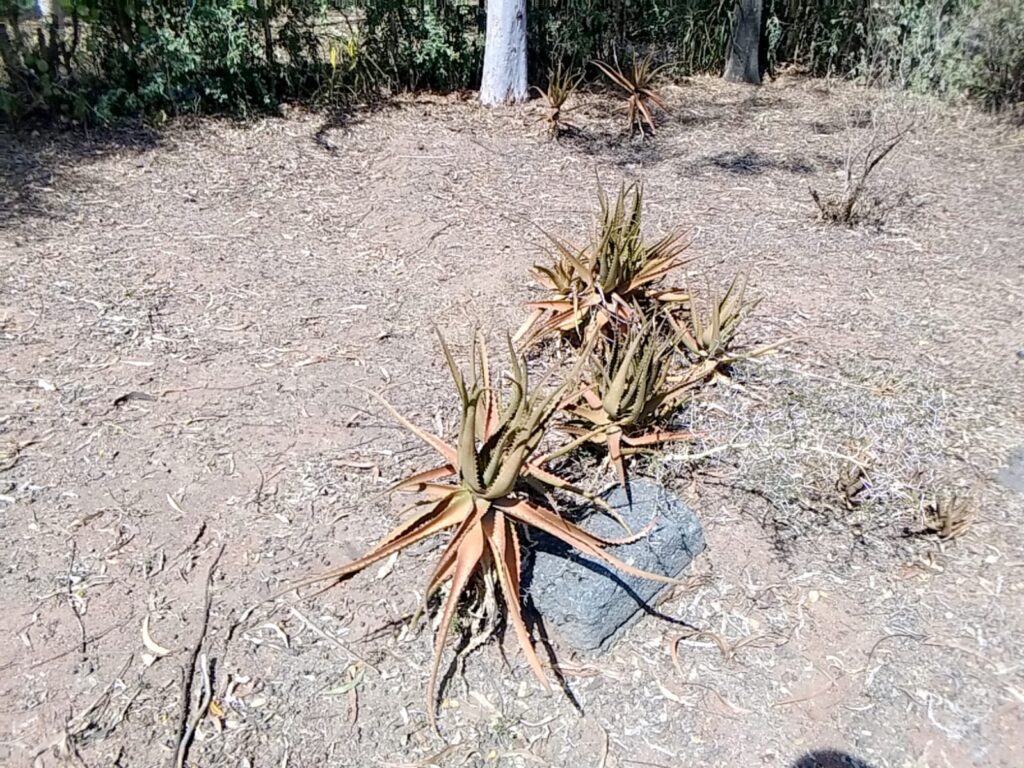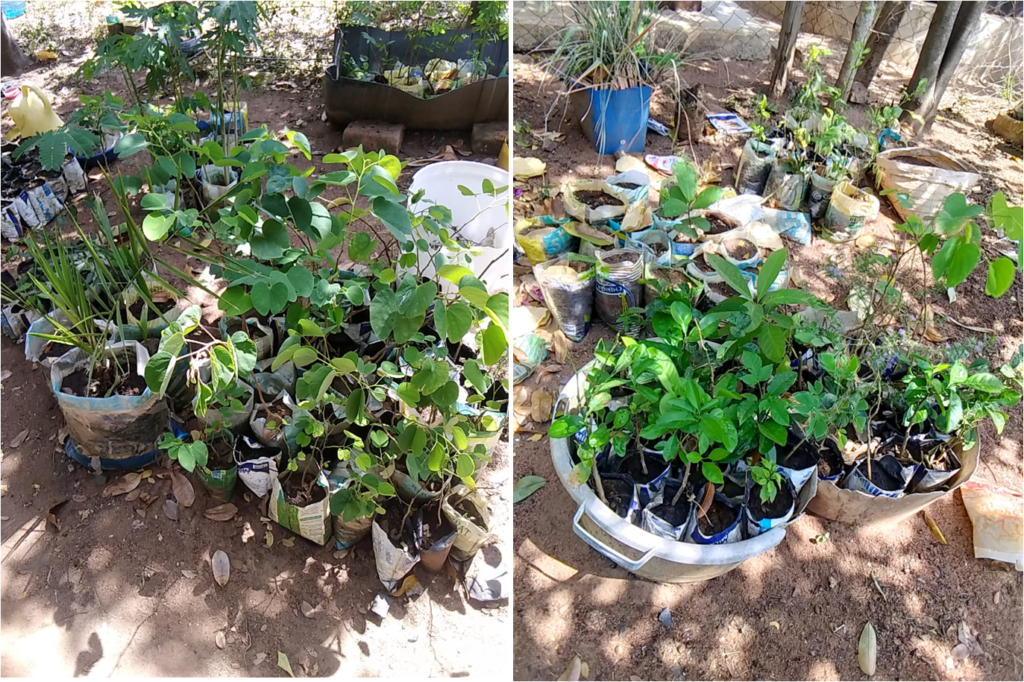“Women should not be planting trees,” these words are still clear in the mind of 69-year-old Redempta Onong’no .
These were the voices of the naysayers who thought her decision to plant trees in a home which had a man was an overstep to her mandate.
But having been raised by a woman who took tree planting as both personal and collective responsibility, and with her new home in Rabuor, Kisumu County being a wilderness of a sight, characterized by hard dry ground, she knew she could not afford to just sit tight.
And 19 years since she planted the first tree, she has no regrets at all.
“As a child, I could see my own mother plant and care for trees, so I just turned a deaf year to what people were saying around me,” she says.
Trees were definitely not going to plant and grow themselves, at least not in these lands. She knew this for a fact.
Her mother, having been an environmentalist and a herbalist, nature had become a comforting companion to Onong’no growing up, a gem she could not lose sight of.
So armed with her farming tools, she sought advice from a local environmental organization on the best trees for the semi-arid region, and with that, the digging began.

She planted over 30 tree seedlings within her three acre piece of land and watered them constantly from a well within the compound.
For close to three years, she toiled, mostly in the scorching sun, giving her time and energy to ensure the survival of her masterpieces.
So faithful and committed was the nature loving woman that when she grew weary of the activity, probably due to a lack of vigor synonymous with advanced age, she paid someone to help with the drawing of water from the well and even the watering.
The trees which now stand tall, providing both shade and fruits are a testament of defiance against the harsh and unforgiving climate that has only grown worse over the years.
“When we first came here, though dry, it could rain in season,” she recalls.
She however says that today’s climate is worse, adding that they cannot afford to water as frequently as before.
“Corn farming used to be a successful endeavor due to the somewhat reliable rainfall patterns but has slowly become less and less admirable,” she points out.
This, she reveals, has greatly led to a reduction in food production in these parts of the country.
As our conversation went on under a huge tree in her backyard that shielded us from the scorching heat of the midday sun, the timeworn but life filled senior citizen opened up about her ‘herbal’ side of life.
The healer
Onong’no who is the sixth born in a family of nine children grew up witnessing her late grandmother using plant leaves, barks, seeds and even roots to make concoctions that she used to cure certain ailments.
“Whenever I would be under the weather, my grandmother would make some ‘tea’ for me and I would feel better after a short while,” she narrated, adding that the taste was mostly unpleasant but the result was definite and certain.
The remedies, which she says used to work like magic, were sought after, not just by immediate family members and neighbors but also far and wide.
This knowledge was then passed to her mother who used to accompany her grandmother during her many escapades into the wild as she sought her tools of trade.
“At times, my mother would be sent alone into the bushes to bring particular plants and I also got a chance to know some of them,” she said.
It is only about two years ago however, that she started dealing herself.
In what she describes as ‘intervention from beyond’, the woman was napping one afternoon due to an illness and had a dream of her grandmother advising her on what plant leaves to use as remedy.
After this encounter, she made a decision to resurrect her knowledge of the craft.
“People were again skeptical when I started planting certain herbal trees and plants which were not indigenous to this climate. But now they are mature trees, some of which have started serving their purpose,” she says.
Her backyard, just under the shades, is packed with both young and mature plants which she says aids in her craft.
The herbalist, who now boasts of a plethora of medicinal plants, including shrubs, says she has tended to many people who occasionally throng her home in such of remedies for their different ailments.
“I have heard of numerous success stories of the remedies I provide,” she states.
“Not long ago, an elderly woman with severe joint pain paid me a visit, but after a cup of my remedy she called the next day to say she is feeling much better,” Onong’ no adds.
Most of her patients suffer from conditions like blood pressure, diabetes, skin conditions, constipation, digestion problems and even memory loss.

Some of her herbs are dried away from direct sunlight and ground into powder, to be mixed with water during ingestion, while others are boiled or taken while fresh.
The shade helps the leaves to retain their green coloring.
Most people, she says, are increasingly turning to herbs as they are natural and posses no notable side effects.
Besides this, she adds that majority of her clients pay her a visit after unsuccessful usage of pharmaceuticals.
Her charges depend mostly on the age of the patient and the ailment. The payments, she adds, also depend on an understanding between her and her patients who sometimes arrive requiring assistance but with empty pockets.
This is sometimes a challenge to her. However, given the passion she has and her need to help others, she doesn’t turn any away who knocks at her door.
The woman, who also admits to not being a certified medical doctor, says the most she can do is test her patients for common and readily detectable conditions like blood sugar level and blood pressure.
“I always advise people to first visit a hospital which is well equipped with technical medical equipment and personnel who can carry out valid medical examination before they can knock on my door,” she stresses.
She adds that conditions to do with the kidney, liver as well as cancer must first be diagnosed by a professional.
The tools of trade
Among the many plants she uses are lemon, guava, mango, avocado, moringa, aloevera and the neem trees.
“These plants, like ‘mwarubaini’, have numerous health benefits that most people take for granted. The leaves of most of these plants are powerful remedies” she explains.
‘Neem’ or ‘Mwarubaini’ is mostly known for its anti-inflammatory, anti-fungal and anti-bacterial properties and treats an array of illnesses.
“That one is called Moringa,” she points at another tree at one corner of the ‘shamba’ with long hanging seed pods.
The leaves, she adds, can be cooked as vegetable and are highly nutritious while the roots are a powerful remedy for arthritis.
She says that majority of people, mostly the current generation, fall ill because of unhealthy lifestyle, adding that people have stopped eating natural foods and are going for processed foods which are packed with chemicals and preservatives.
“I advise people to eat natural fruits like lemon, mangoes and guavas and reduce their intake of processed foods,” she says.

She says that lemon and guava leaves are also a good remedy against the common cold while avocado leaves help with joint pain.
The woman, who has provided remedies for people for the past two years, says she has also received success stories of her concoctions for ailments like heart conditions, uncontrollable menstrual flow, erectile dysfunction in men and measles in children as well as cancer, in its early stages.
She says that some of the smaller plants she uses in her craft have disappeared completely from the region due to the continued dry conditions.
This is a great challenge.
“There are certain plants I no longer see in these areas and we believe climate change to be the main culprit,” she adds.
She has now made a point of protecting certain plants that have increasingly become rare by monitoring them closely and giving them special care.

Nice one and keep it up!